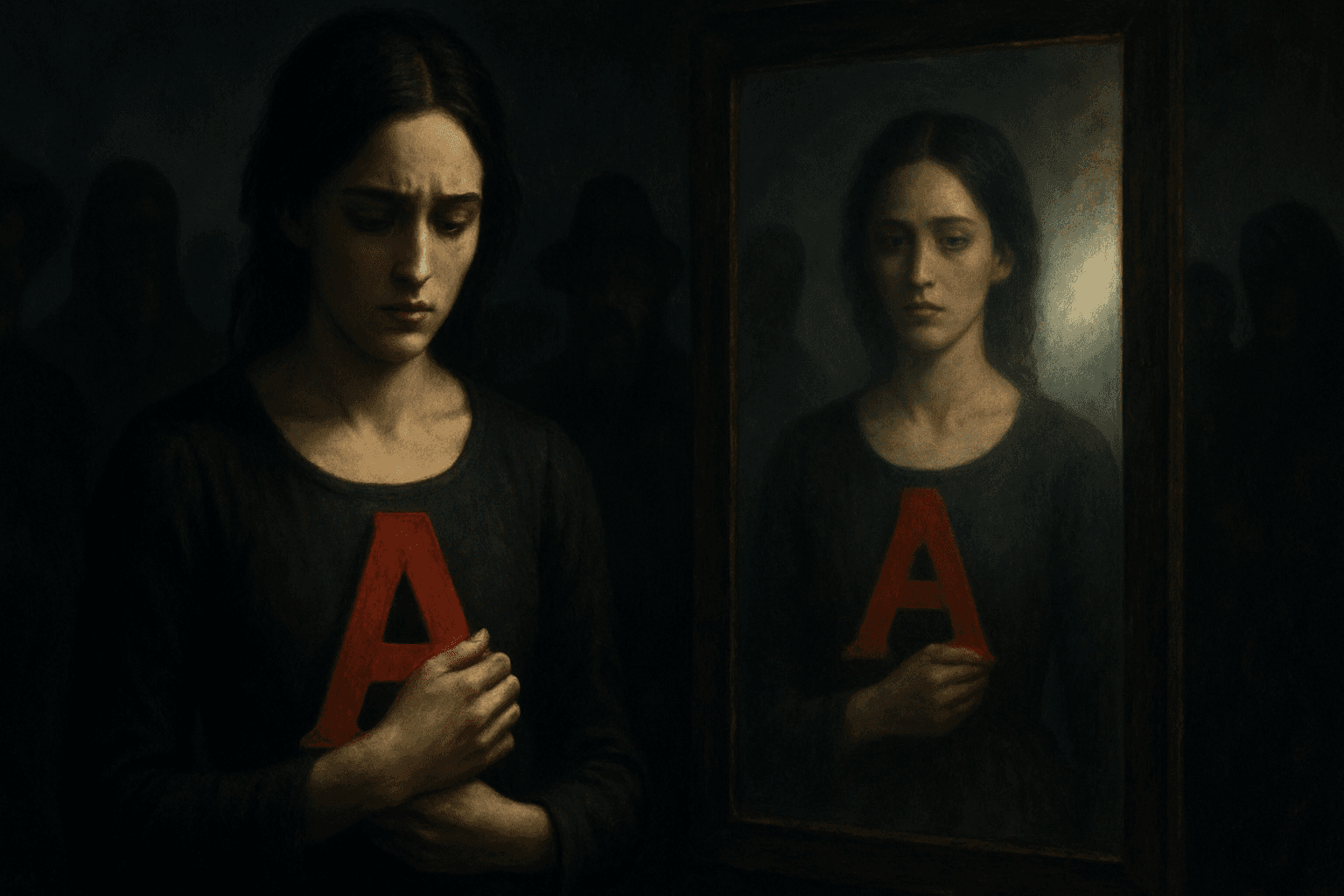Unmasking Shadows: The Intricate Dance of Identity and Secrecy in The Scarlet Letter

In Nathaniel Hawthorne's The Scarlet Letter , the themes of identity and secrecy weave a complex tapestry that shapes the characters' lives and their interactions within a judgmental Puritan society. From the haunting shadows of societal expectations to the intimate struggles of personal truths, Hawthorne deftly illustrates how identity is often a reflection of what we choose to conceal.
At the heart of this exploration is Hester Prynne, a woman marked by the scarlet letter 'A' – a symbol of her sin and societal shame. Emerging from the prison with her infant daughter, Hester embodies the conflict between her public disgrace and her inner strength. The townspeople's harsh judgment only amplifies her isolation, yet she navigates her dual identity as both a sinner and a resilient mother. As she grapples with her new reality, we see how the weight of secrecy alters her sense of self, leading her to redefine her identity through acts of charity and resilience, despite the stigma attached to her past.
But Hester is not alone in her struggle. Reverend Dimmesdale, her secret lover, embodies the torment of hidden sins. His public persona as a revered minister starkly contrasts with his private guilt, creating a chasm between who he appears to be and who he truly is. Dimmesdale's internal conflict is palpable as he wrestles with the burden of his concealed identity. The scaffold scenes, particularly when he stands alongside Hester, serve as powerful symbols of the interplay between public shame and private truths. His ultimate confession, a culmination of years of secrecy, reveals not just a personal liberation but also the tragic cost of living a life shrouded in hidden truths.
The dynamics between Hester, Dimmesdale, and Roger Chillingworth further complicate this theme. Chillingworth, Hester's estranged husband, becomes consumed by his need for vengeance, embodying the darker side of secrecy. His manipulation of Dimmesdale underscores how hidden agendas can distort identities and relationships. As secrets bind these characters together, they also sow seeds of destruction, leading to tragic consequences.
Even Pearl, Hester's daughter, is intricately tied to this theme. Her wildness and innocence serve as a mirror reflecting Hester's tumultuous past and the societal judgment that surrounds them. Pearl's rejection of Dimmesdale until he acknowledges his connection to her highlights the profound impact of secrecy on familial bonds and identity.
Ultimately, Hawthorne's narrative invites readers to reflect on the nature of identity shaped by secrecy. The characters' struggles resonate with the universal truths of human experience—how our hidden truths can shape our identities, influence our relationships, and even dictate our fates. Hester's journey from shame to redemption reveals that while society may impose its judgments, it is the secrets we carry that often define us.
In the end, The Scarlet Letter serves as a poignant reminder that identity is not just what we reveal to the world, but also what we choose to keep hidden. As we peel back the layers of secrecy, we find that the quest for self-discovery is fraught with challenges, yet ultimately, it can lead us toward profound understanding and acceptance of ourselves and others. So, as we delve into Hawthorne's world, we are left to ponder: how much of our own identity is shaped by the secrets we keep?
Books: The Scarlet Letter
Authors: Nathaniel Hawthorne
Publishers: Public Domain